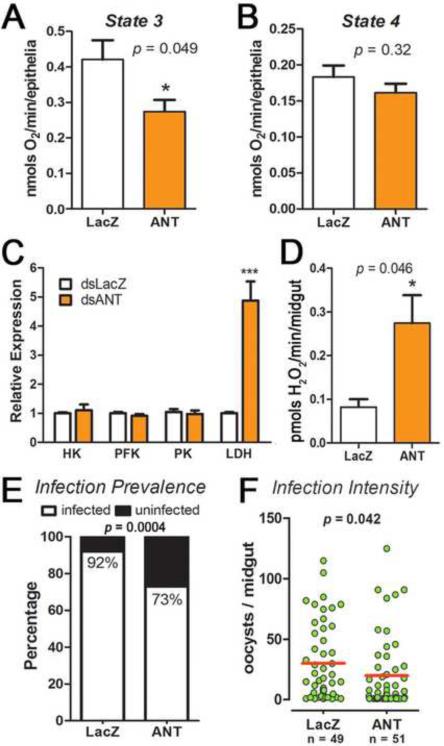Figure 5. Effect of silencing the adenine nucleotide translocator (ANT) in Susceptible females on mitochondrial respiration, expression of glycolytic enzymes, H2O2 production, and susceptibility to Plasmodium infection.
(A) State-3 (ADP-stimulated) respiration in control (dsLacZ-injected, white bars) and ANT-silenced (orange bars) midguts (B) State-4-like respiratory rate (phosphorylation-independent oxygen consumption). (C) Gene expression analysis of key glycolytic enzymes in the midgut: hexokinase (HK), phoshofructokinase (PFK), pyruvate kinase (PK) and lactate dehydrogenase (LDH) in midguts 2 days after dsRNA injection. (D) Hydrogen peroxide production in the midgut (*p < 0.05, *** p < 0.0001, T-test). Effect of ANT silencing on the (E) prevalence (p < 0.0004, Chi-square test) and (F) Intensity (p = 0.042, Kolmogorov-Smirnov Test) of infection with P. berghei. Each dot represents the number of oocysts present on an individual midgut and the median is indicated by the red line(p = 0.042, Kolmogorov-Smirnov Test)

